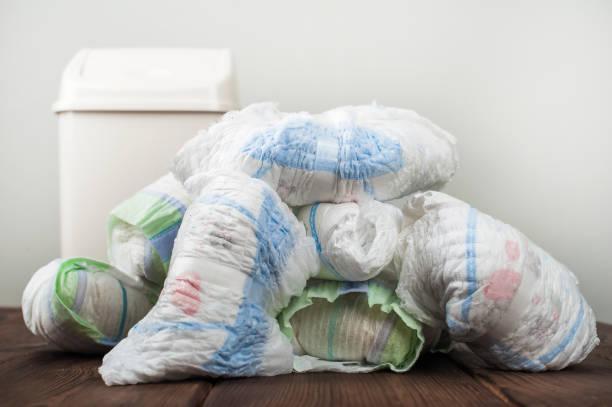The need for adult diapers for self and special care is rising as the global adult population increases. Nearly every household has an elderly person, and the demand for adult diapers is higher due to healthcare concerns and incontinence.
So, where do these diapers go immediately after use? To the landfills, of course, since the world has yet to invent any diaper recycling program to address such voluminous waste. Manufacturers and diaper users also have a significant role in reducing the menace of carbon footprint from diapers.
As the green movement and sustainability concerns take over, adult diaper manufacturers are also taking more initiatives to reduce the diaper waste ending in landfills. Whenever you buy current diapers, you will notice changes in features, quality, and nature of materials.
All these changes are aimed at helping to reduce the number of diapers used and the uncertain decomposition after disposal.
Why Buy Eco-Friendly Diapers
1. Longer Use Before Changing
Due to concerns about too much diaper dumping, you need to consider the best diapers that can last longer and enable you to reduce the number of diapers you use. Imagine if you could reduce the number of diapers from four to only two daily. This is of greater benefit compared to any diapers you can buy.
These diapers last longer because of the integrated special technologies to improve fluid retention. Unlike other diapers, these have a higher fluid capacity and can contain more fluids than you thought. Due to such capabilities, they are best for people with heavy and frequent incontinence. Imagine the benefits it would have for someone with low incontinence. You can end up using only one diaper a day, and the thought of changing a new one would be due to the time recommendation and no leaks or filled diapers.
2. Greater Comfort
Most diapers are comfortable, that is, if you buy them from reputable brands and sources. For the biodegradable diapers, the material guarantees extra comfort and gentleness on the skin, similar to the baby diapers. Instead of synthetic products, all diapers you buy are made directly from organic products free from chemicals and harmful substances.
Organic products increase their capacity and decompose faster than other diapers. Since they do not have any dyes or chemicals, there is limited or no reaction with the urine. Upon removal, you can hardly notice any scents. The biodegradable products also make it difficult for the bacteria to thrive within the diaper core. Coupled with anti-leak and scent technologies, these diapers are reusable for a long time.
Consider different types, like disposable pull-up adult diapers from reputable brands, for more comfort. They are easy to wear, and the materials used are gentle on the skin to ensure you are comfortable and free from the heat due to urine reactions. Additionally, they have technologies like odor protection to ensure you are comfortable even when you wear the diapers longer.
You can buy other variations if you need more clarification about the best option. For example, you can get reusable, disposable, and hybrid. Each has the best sustainable materials and technologies integrated to help reduce ozone gasses and emissions. You can also select them based on the capacities suitable for different types of incontinence.
3. Price Benefits
Since you only need about one or two diapers daily, you can greatly save on buying new diapers or accessories like diaper pads. Most diaper manufacturers are shifting to reusable diapers to comply with the sustainability rules. Many people are also interested in this option since you can use one diaper over time before buying a new one.
Once you remove it, you must clean and let it fully dry, then reuse it. To ensure they are washable and reusable, the modern reusable diapers are made of washing machine-friendly materials. However, you need some degree of caution when using these diapers. Failure to clean and dry properly creates the perfect breeding ground for fungi, leading to skin rashes, itchiness, and other fungal attacks.
How Diapers Affect The Environment
If you pass by landfills, one of the most common visible wastes is adult and baby diapers. Imagine the number of elderlies using diapers globally, over 25 million. This is a lot of waste going into landfills, and the number alone is an environmental risk due to piles of waste creating a perfect ground for the formation of methane and green gasses.
Initially, most diapers were made of materials that took longer to disintegrate; some used dyes and other chemicals. Eventually, these chemicals interact with the urine when disposed of, creating a reaction perfect for forming green gases. Other options for dealing with such waste, like burning it in landfills, also create environmental hazards in the form of smoke mixed with harmful gases.
Since they can decompose faster, you do not have to worry about how to dispose of them. All you have to do is neatly wrap and add them to other water products, and from there, they end up in landfills. Due to ease of decomposition, there is no need to burn them.
Bottomline
Reducing the carbon footprint requires a decrease in the waste disposed of in landfills, and biodegradable diapers accomplish those through the choice of material and technology.
The technology and material used aim to prevent overheating, scents, and leaks, enabling you to use the diapers longer before changing into new ones. Once in the landfills, the materials can decompose fast with limited waste gas emission, reducing the volume of waste on the surface and air pollution.























